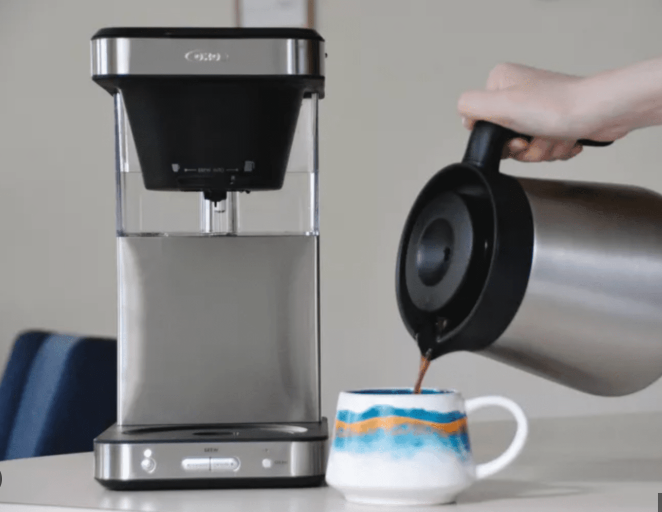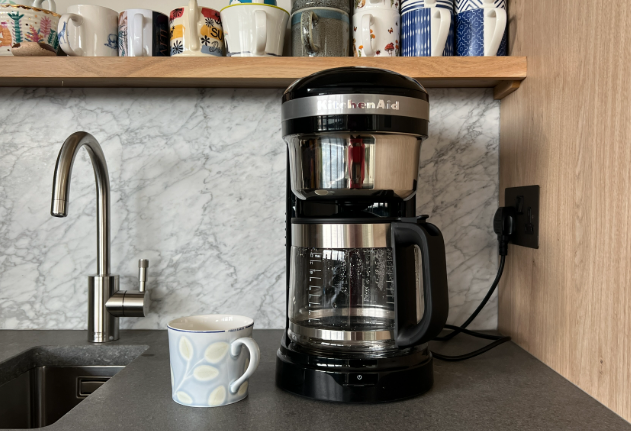In this comprehensive Philips coffeemaker review, we explore the innovative features, performance, and value of Philips coffee machines, designed to bring café-quality coffee to your kitchen. Whether you’re a novice or a seasoned coffee enthusiast, Philips offers a range of coffeemakers, from drip filter models to super-automatic espresso machines, catering to diverse needs and budgets. This guide covers everything from setup to maintenance, helping you decide if a Philips coffeemaker is the perfect addition to your home. For more brewing tips, visit coffeemakert.com.
Why Choose a Philips Coffeemaker?
Philips is renowned for its reliable, high-quality appliances, and their coffeemakers are no exception. This Philips coffeemaker review highlights models like the Philips 3200 Series LatteGo and the Philips 5400 Series, which deliver versatility for black coffee lovers and those craving milk-based drinks like lattes and cappuccinos. With features like the LatteGo milk frothing system, ceramic grinders, and intuitive touch displays, Philips coffeemakers make it easy to enjoy professional-grade coffee at home.
From compact drip machines for small spaces to fully automatic espresso makers for larger households, Philips combines advanced technology with user-friendly designs. Their coffeemakers are praised for durability, ease of cleaning, and excellent value, making them a top choice for coffee lovers. Let’s dive into the key aspects of using and maintaining a Philips coffeemaker to ensure you get the most out of your brewing experience.
Coffeemaker Setup: Quick and Hassle-Free
The coffeemaker setup process for Philips machines is designed to be simple, even for beginners. Most models, like the Philips 3200 Series LatteGo, come nearly fully assembled. Setup typically involves attaching the water tank, installing the AquaClean water filter (if included), and running a water cycle to clean the machine. For example, the Philips 5400 Series features an automated setup process guided by its touch display, including a water hardness test to optimize performance.
For drip filter models like the Philips All-in-1 Brew (HD7900/50), setup is even easier—just attach the permanent filter, fill the water tank, and rinse the system. The process takes about 10-30 minutes, depending on the model, and Philips provides clear manuals and online video tutorials for guidance. This ease of setup makes Philips coffeemakers ideal for those learning how to use a coffeemaker.

How to Use a Philips Coffeemaker
Mastering how to use a coffeemaker from Philips is straightforward, thanks to their intuitive designs. For drip filter models like the Philips HD7466/70, you fill the water tank, add coffee grounds to the filter, and select your brew intensity. Super-automatic models, such as the Philips 3200 LatteGo, offer one-touch brewing for espresso, cappuccino, or latte macchiato. Simply select your drink, adjust strength and volume via the touch display, and the machine grinds beans, brews, and froths milk automatically.
The LatteGo milk system, featured on models like the Philips 5500 Series, uses cyclonic frothing to create creamy foam, even with plant-based milk, and is dishwasher-safe for easy cleanup. For pre-ground coffee users, models like the Philips 5400 include a bypass valve for decaf or specialty blends. For more coffee guide tips, explore coffeemakert.com.
Coffeemaker Troubleshooting: Solving Common Issues
Even the best coffeemakers can face issues, and this Philips coffeemaker review covers common coffeemaker troubleshooting concerns. Weak or watery coffee, often reported with super-automatic models, can be fixed by adjusting the grind size (finer for espresso) or increasing the coffee dose via the My Coffee Choice settings. If the machine stops dispensing, check for clogs in the brew group or ensure the AquaClean filter is properly installed.
Milk frothing inconsistencies, particularly with the classic milk wand on models like the Philips 2200 Series, may require practice to perfect the steaming technique. Frequent descaling notifications can occur if the AquaClean filter isn’t replaced every 3-6 months. To resolve, follow the machine’s descaling instructions, which take about 30 minutes. Always refer to the manual for model-specific troubleshooting advice.
Coffeemaker Cleaning: Keeping Your Machine Pristine
Regular coffeemaker cleaning is essential for great-tasting coffee and machine longevity. Philips makes this easy with removable, dishwasher-safe parts like the LatteGo milk system, drip tray, and brew group. The LatteGo system, found on the Philips 3200 and 5500 Series, has just two parts and cleans in under 10 seconds under a tap or in the dishwasher. The AquaClean filter reduces descaling needs, allowing up to 5,000 cups before maintenance, provided you replace it regularly.
For drip filter models like the Philips HD7466/70, the permanent filter and glass jug are dishwasher-safe, simplifying cleanup. To descale, use Philips’ recommended descaler or a vinegar-water mix, followed by two water-only cycles to rinse. Regular cleaning prevents limescale buildup and ensures fresh-tasting coffee. For detailed coffeemaker maintenance tips, check Philips’ official website or user manuals.
Portable Coffeemaker: Philips Senseo for On-the-Go Brewing
For those needing a portable coffeemaker, the Philips Senseo series is an excellent choice. These compact, pod-based machines brew a flavorful cup with a cappuccino-like froth in under a minute, perfect for small spaces or travel. The Philips Senseo Supreme features an adjustable spout for various mug sizes and a sleek design (around 8 x 12 inches), making it ideal for dorms, offices, or camping.
While not as feature-rich as super-automatic models, the Senseo’s simplicity and affordability (starting at around $100) make it a great option for quick, mess-free brewing. Its pod system ensures consistency, and the compact size enhances portability without sacrificing quality.
Coffeemaker Tips for a Perfect Brew
To get the most out of your Philips coffeemaker, follow these coffeemaker tips:
- Use fresh beans: Opt for high-quality, non-oily beans to prevent grinder clogs and enhance flavor.
- Adjust grind settings: Use a finer grind (settings 2-3) for espresso or coarser for drip coffee.
- Customize settings: Tweak strength, volume, and milk froth levels using My Coffee Choice for personalized drinks.
- Use filtered water: The AquaClean filter or filtered tap water reduces limescale and improves taste.
- Clean regularly: Rinse the brew group weekly and descale as prompted to maintain performance.
For additional brewing tips, visit coffeemakert.com.
Coffeemaker Maintenance: Ensuring Longevity
Proper coffeemaker maintenance is key to keeping your Philips machine in top condition. Beyond regular cleaning, store the machine in a dry place to prevent mold or corrosion. For super-automatic models, lubricate the brew group monthly with Philips-approved grease to ensure smooth operation. Replace the AquaClean filter every 3-6 months to minimize descaling needs.
Philips offers replacement parts like water tanks, milk carafes, and brew groups through their official website, making it easy to maintain your machine. Regular upkeep not only improves coffee quality but also extends the lifespan of your investment.
Coffeemaker Safety: Brewing with Confidence
Coffeemaker safety is a priority with Philips coffeemakers. Features like auto-shutoff (after 30 minutes to 2 hours, depending on the model) prevent overheating, ideal for busy households. The LatteGo milk system and drip trays are designed with smooth, easy-to-clean surfaces to reduce mess and burn risks. For models with glass jugs, handle carefully to avoid cracks, and never overfill the water tank to prevent spills.
Super-automatic models include safety prompts on the display, such as alerts for refilling the water tank or emptying the coffee grounds container. Always unplug the machine when not in use and follow the manual’s safety guidelines for worry-free brewing.

Best Coffeemaker Guide: Top Philips Models
In this best coffeemaker guide, we highlight two standout Philips models based on performance, features, and value:
- Philips 3200 Series LatteGo (EP3241/54): Priced around $800, this super-automatic machine offers one-touch brewing for espresso, cappuccino, and latte macchiato. Its LatteGo milk system creates silky foam, and the ceramic grinder ensures consistent grinds for up to 20,000 cups. Perfect for those seeking versatility and ease.
- Philips All-in-1 Brew Drip Coffee Maker (HD7900/50): At approximately $200, this drip model features a duo-bean container for switching between fresh and pre-ground coffee. Its permanent filter and adjustable brew strength make it a budget-friendly option for drip coffee lovers.
The 3200 LatteGo is ideal for espresso enthusiasts, while the All-in-1 Brew suits those who prefer classic drip coffee.
How to Brew Coffee in a Philips Coffeemaker
Mastering how to brew coffee in a coffeemaker is easy with Philips’ user-friendly designs. Here’s a quick guide for super-automatic models like the Philips 3200:
- Fill the water tank with filtered water and install the AquaClean filter if needed.
- Add fresh coffee beans to the hopper or use pre-ground coffee in the bypass valve.
- Select your drink (e.g., espresso, cappuccino) on the touch display.
- Adjust strength, volume, and milk froth settings via My Coffee Choice.
- Press start, and the machine grinds, tamps, and brews automatically.
- For milk-based drinks, attach the LatteGo system or use the steam wand.
For drip models, fill the water tank, add grounds to the filter, select brew intensity, and press start. Use medium-grind coffee for drip machines and fine-grind for espresso to optimize flavor.
Pros and Cons of Philips Coffeemakers
To conclude this Philips coffeemaker review, here’s a summary of the pros and cons:
- Pros:
- Innovative features like LatteGo milk system and AquaClean filter.
- One-touch brewing for espresso and milk-based drinks.
- Dishwasher-safe parts for easy cleaning.
- Compact designs, including portable Senseo models.
- Customizable settings for personalized coffee.
- Cons:
- Higher price point for super-automatic models ($600-$1,000).
- Milk wand models require practice for consistent frothing.
- Regular filter replacements add to long-term costs.
Conclusion: Is a Philips Coffeemaker Right for You?
This Philips coffeemaker review showcases why Philips is a top choice for coffee lovers seeking quality, convenience, and versatility. From the compact Senseo for quick brewing to the advanced 3200 LatteGo for barista-style drinks, Philips offers something for everyone. With intuitive controls, easy maintenance, and safety features, these coffeemakers deliver a premium coffee experience at home. For more guidance on how to brew coffee in a coffeemaker, visit coffeemakert.com. With proper care and customization, a Philips coffeemaker can elevate your daily coffee routine to new heights.